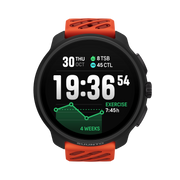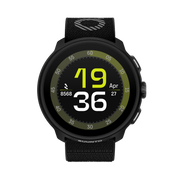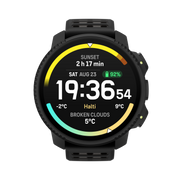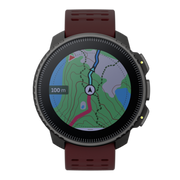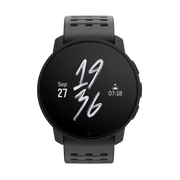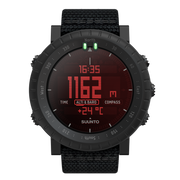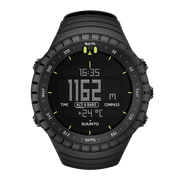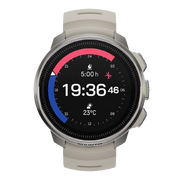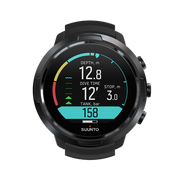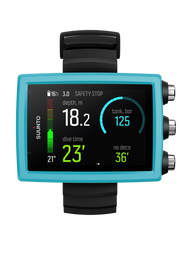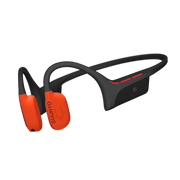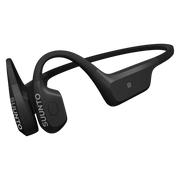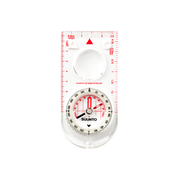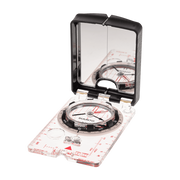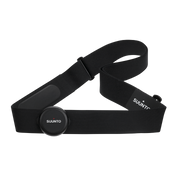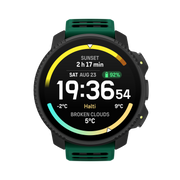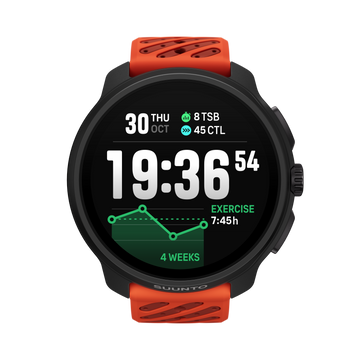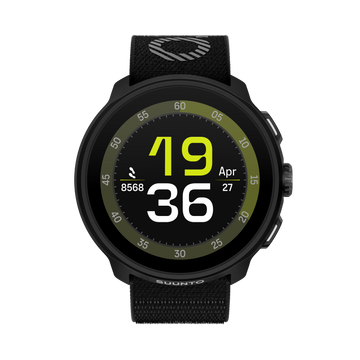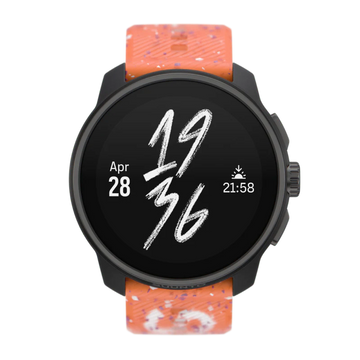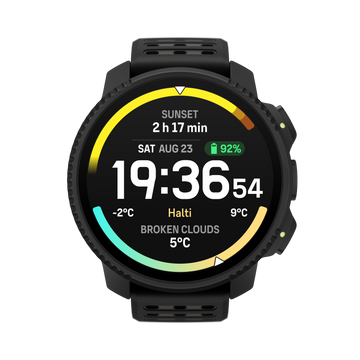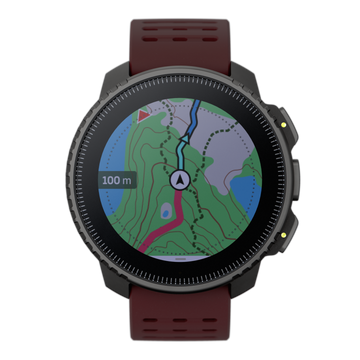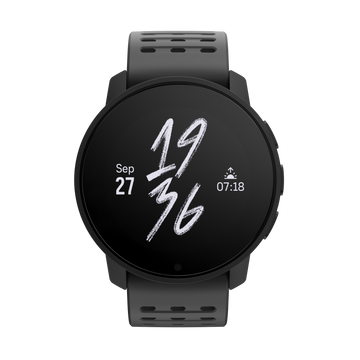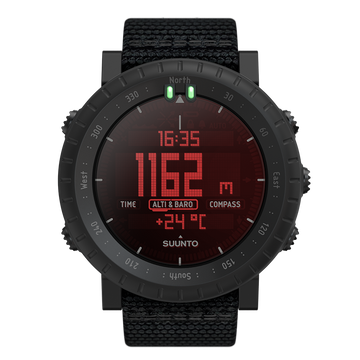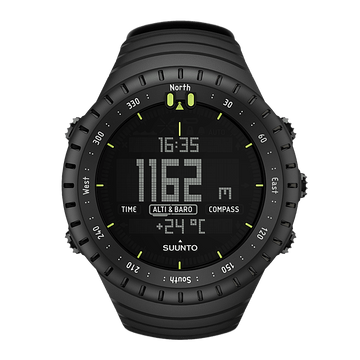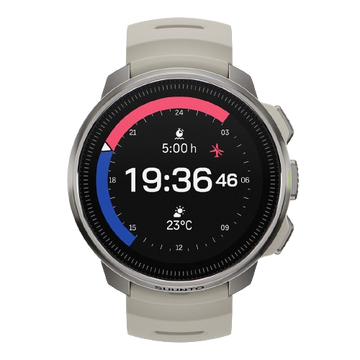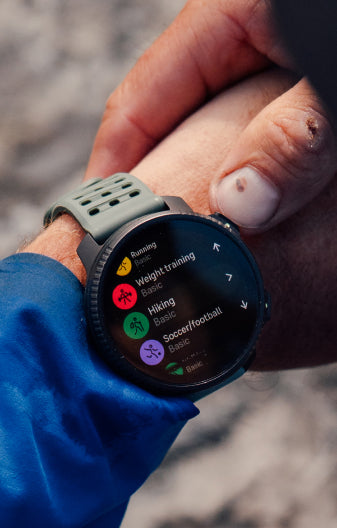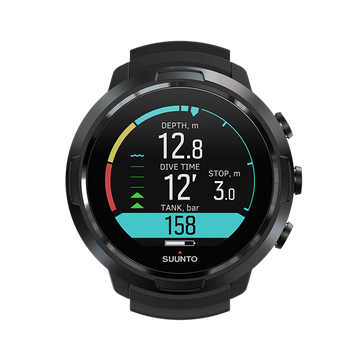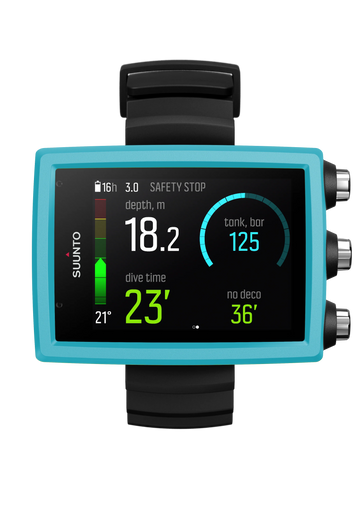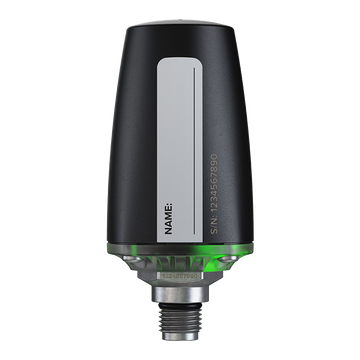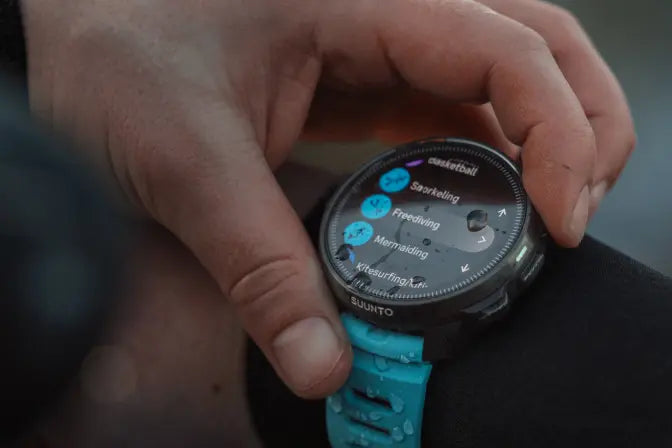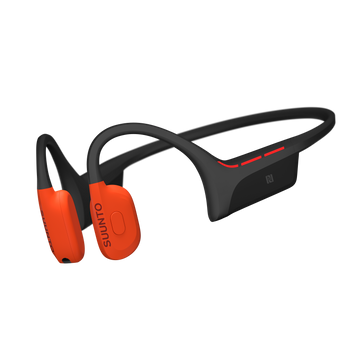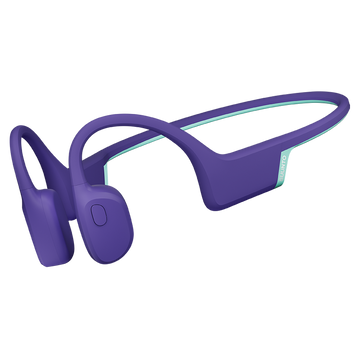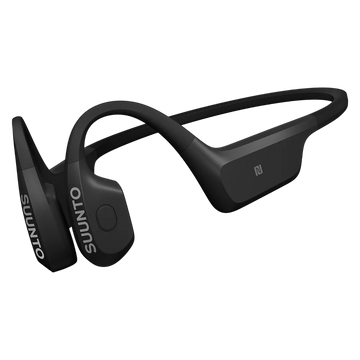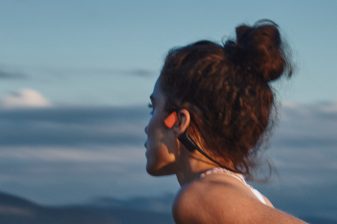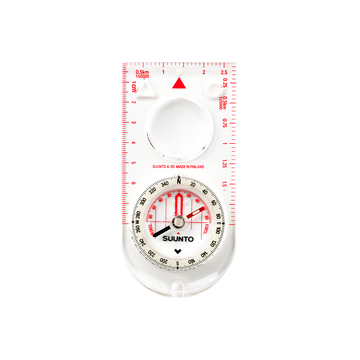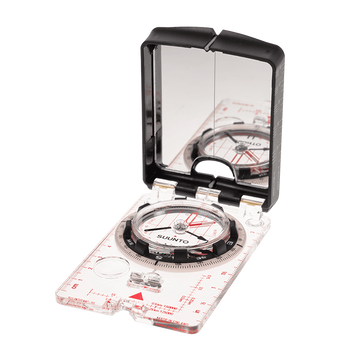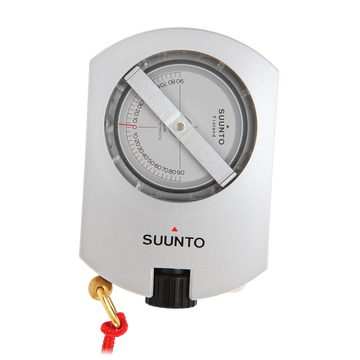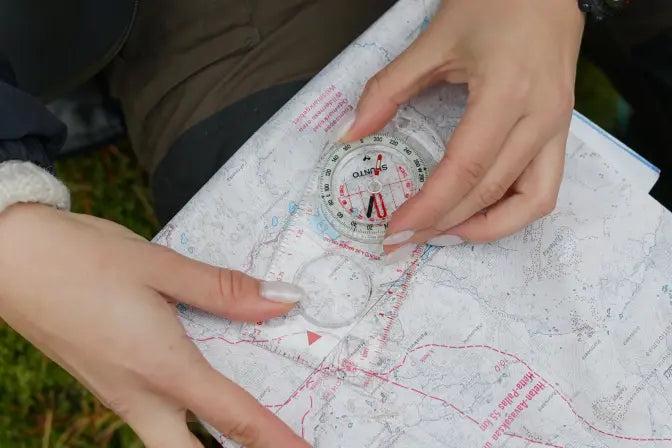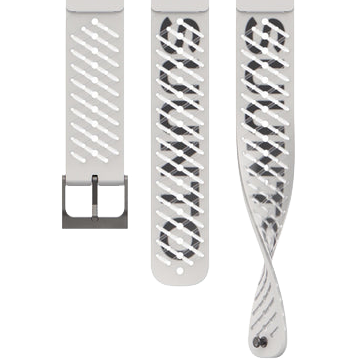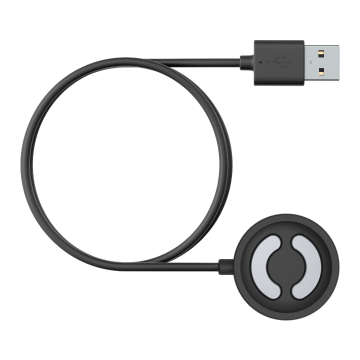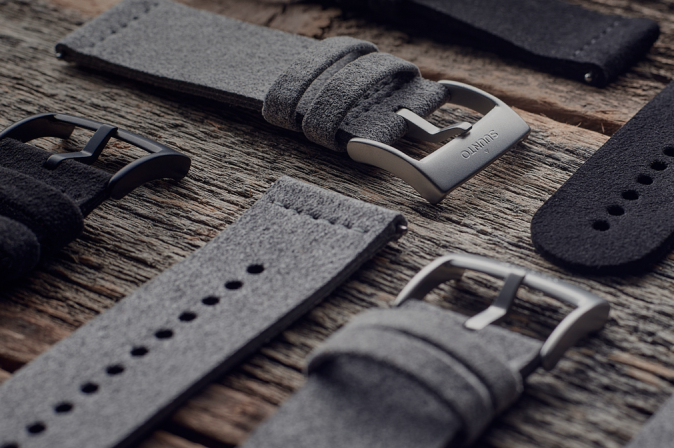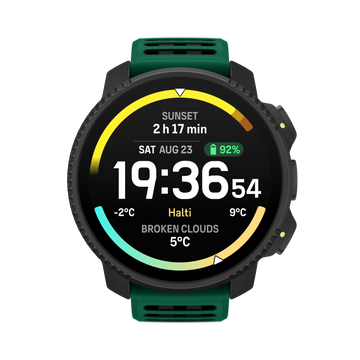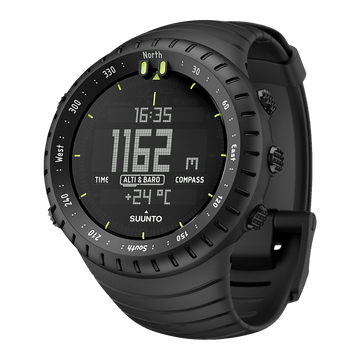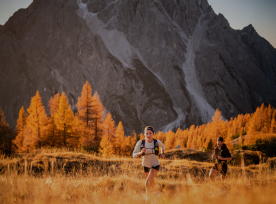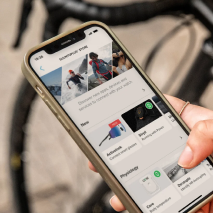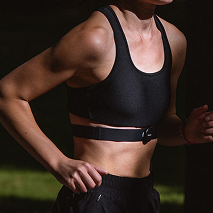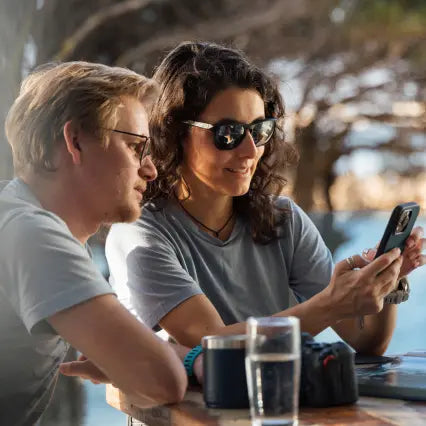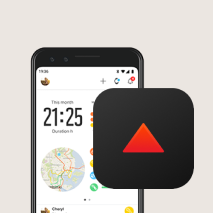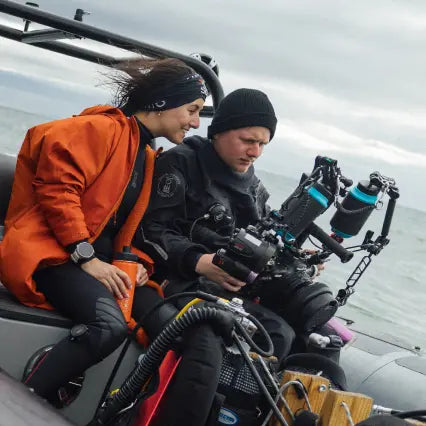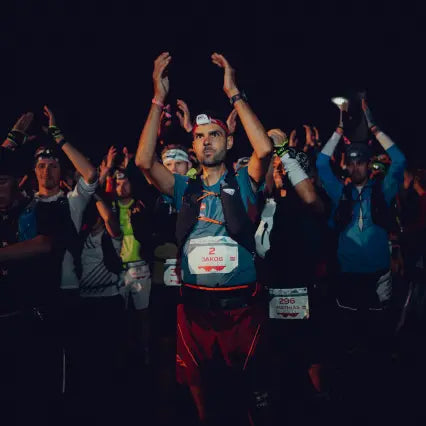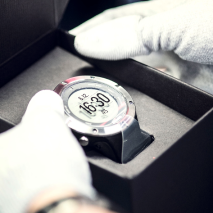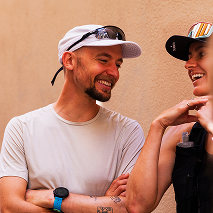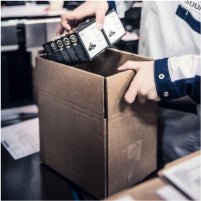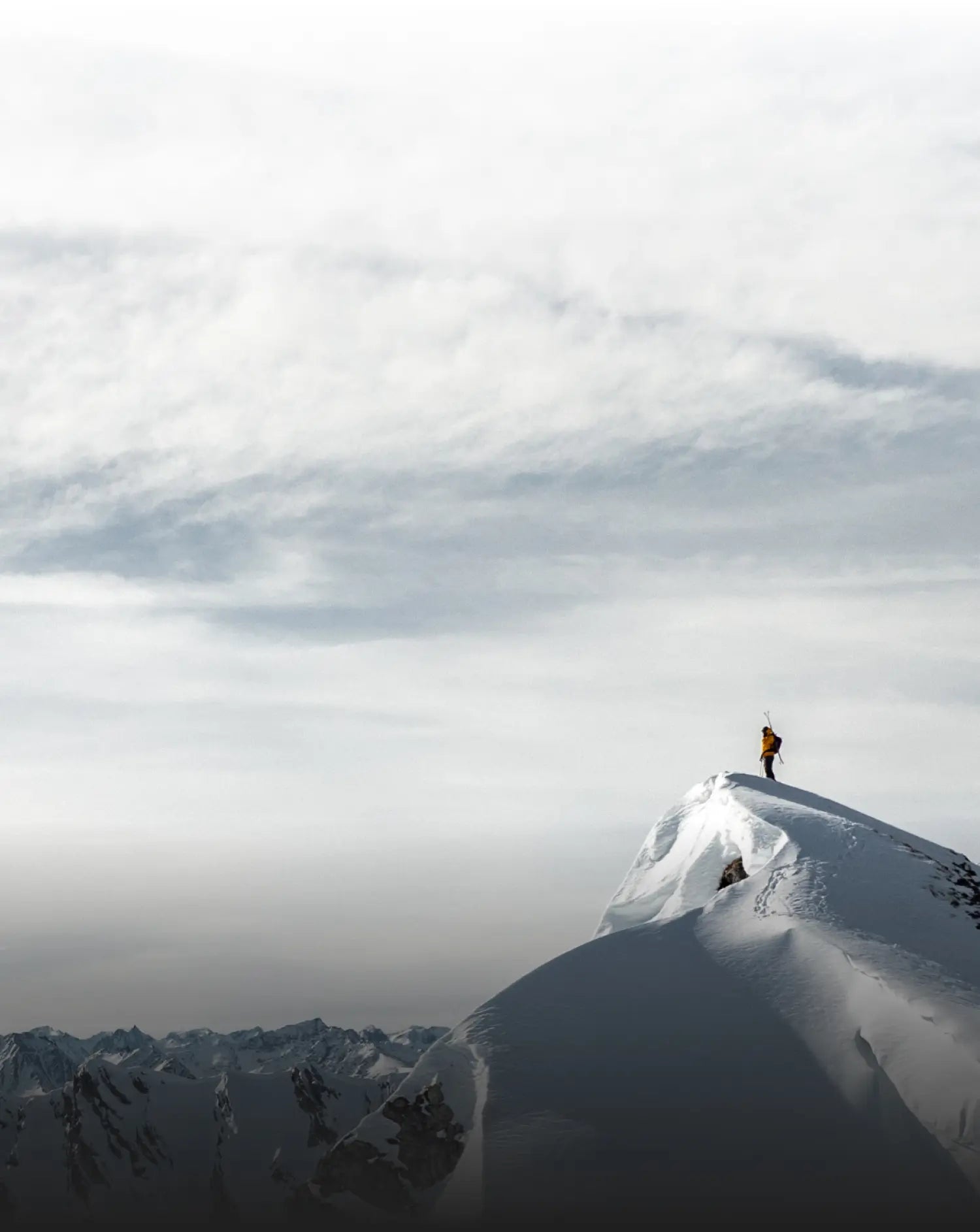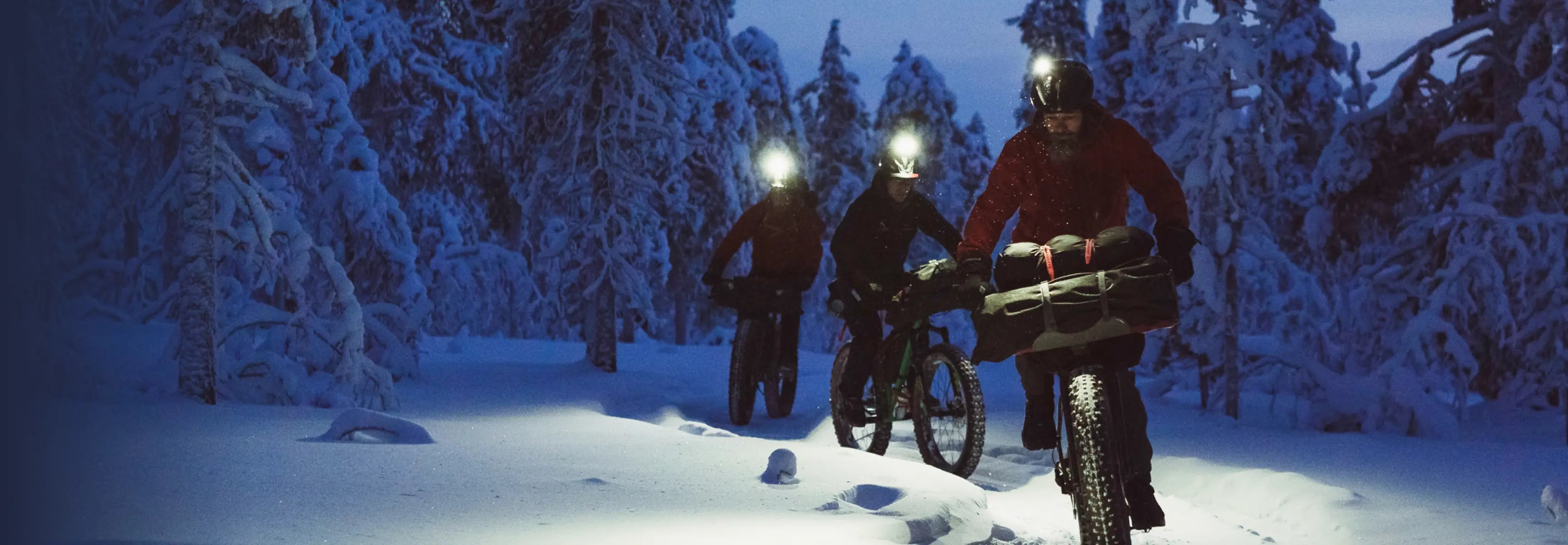
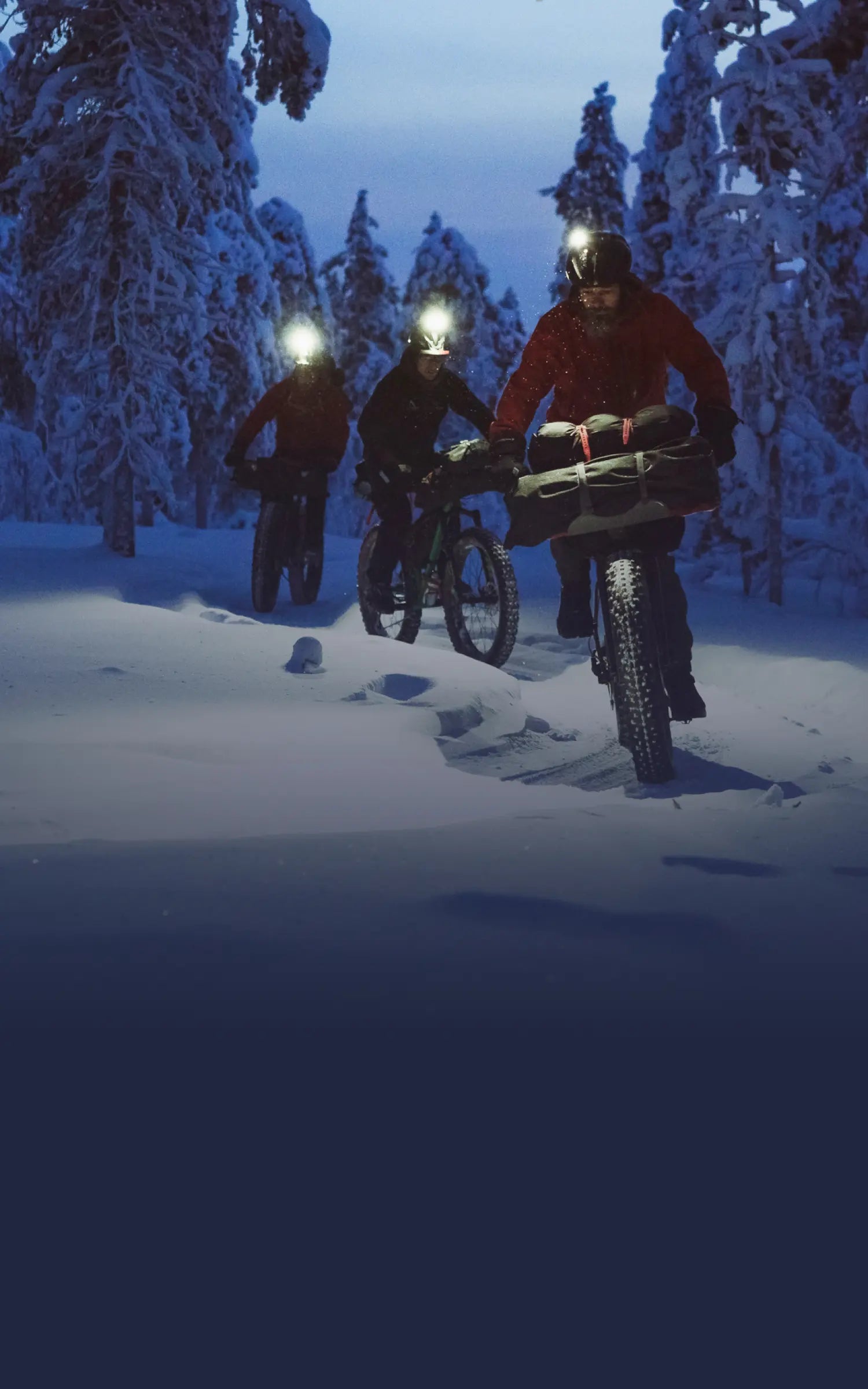
Suunto Blog
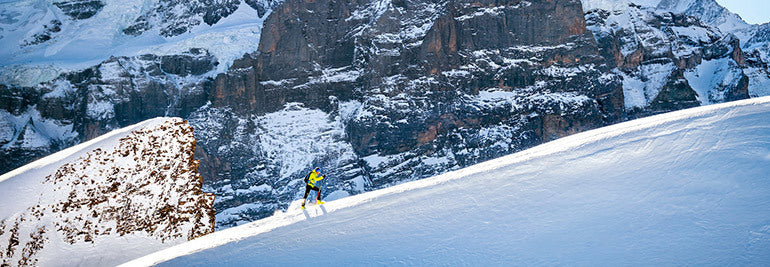
World Vertical Week 2017 Big Data: See who stands on the top!
The World Vertical Week is about collecting vertical meters for your country and your sport. All moves in all human-powered outdoor sports count. To keep the playing field level, we were only comparing averages. A cumulative number of ascent meters per country would not have made sense as the population and number of Suunto App users varies.
Skiers are still quite clearly the queens and kings of the hill with 849 meters of ascent in average. The mountaineers climbed on the second spot with 636 meters and the trail runners rounded out the top three with their 400 ascent meters.
Actually the order of the activities remained almost identical compared to 2016: the only difference was that mountain bikers passed the snowshoers in the listings.
Average ascents in various activities
Ski touring 849m
Mountaineering 636m
Trail running 400m
Mountain biking 362m
Snow shoeing 316m
Trekking 293m
Cycling 236m
Cross country skiing 222m
Running 104m
SKI TOURING IS NUMBER ONE – BUT WHO SKIS THE MOST?
Now that we know that ski touring is the sport with the biggest average ascents, it is time to dig deeper. The snowy winter in the Pyrenees has boosted the skiing spirits of the Spanish and they were the only athletes to cross the thousand vertical meter mark – in any country and any activity. Felicitaciones, españoles!
Top 10 countries in ski touring
Spain 1034m
Switzerland 938m
Slovakia 936m
Germany 927m
Andorra 916m
Italy 909m
USA 883m
Austria 877m
Poland 874m
France 858m
A SLIGHT SURPRISE IN MOUNTAINEERING
Mountaineering was second in the activity listings. But the leading nation within that activity was a slight surprise: United Kingdom surely has a long mountaineering tradition, but only a few – at least here in the Suunto office – would have bet their money for the island nation. The UK was not among the top mountaineering nations last year, but still they took the first place with 836 meters in 2017.
Top 10 countries in mountaineering
United Kingdom 836m
Italy 772m
Switzerland 749m
Germany 713m
Japan 685m
France 683m
Austria 655m
Taiwan 620m
USA 600m
South Korea 575m
ASIAN COUNTRIES DOMINATED TRAIL RUNNING
It was clear already last year that China, Hong Kong and Japan are strong in the trail running segment. This year they occupied the top three with excellent performances and clear margins.
Maybe having the Vertical Week in winter limits the possibilities for trail running in mountainous areas in Europe and North-America but still the Asian performance was impressive. Great climbing, China, Hong Kong and Japan!
Top 10 countries in trail running
China 887m
Hong Kong 808m
Japan 711m
Italy 572m
Portugal 540m
Spain 524m
United Kingdom 509m
Slovenia 469m
Greece 468m
Austria 437m
CLOSE MARGINS IN COUNTRY COMPARISONS
We also analysed the data for all human powered outdoor sports and compared the average ascents between countries. The margins were tight, but still there was one above the rest: The Austrians ascended on average more than any other nation, 320 meters per every workout tracked during the Vertical Week.
Top 10 countries overall
Austria 320m
Italy 298m
Switzerland 287m
Spain 261m
Slovenia 261m
Portugal 258m
Hong Kong 247m
France 240m
Norway 235m
Slovakia 218m
TOP COUNTRIES IN OTHER ACTIVITIES
And to give you even more to speculate here are the top countries in the other activities mentioned above.
Top 10 countries in mountain biking
Italy 515m
Slovenia 479m
Spain 471m
United Kingdom 465m
Austria 461m
Switzerland 443m
South Africa 416m
France 370m
Germany 367m
Poland 366m
Top 10 countries in snow shoeing
Italy 564m
Andorra 530m
Austria 510m
Germany 429m
France 424m
Switzerland 345m
USA 228m
Spain 213m
Canada 178m
Finland 163m
Top 10 countries in trekking
France 406m
Italy 397m
Austria 353m
Poland 322m
Spain 307m
USA 274m
Germany 271m
Norway 243m
United Kingdom 229m
China 141m
Top 10 countries in cycling
Spain 405m
Italy 403m
South Africa 393m
Colombia 392m
Portugal 355m
Cyprus 332m
Switzerland 328m
Czech Republic 308m
France 298m
Austria 294m
Top 10 countries in cross country skiing
Czech Republic 391m
France 312m
Poland 286m
Norway 270m
Sweden 266m
Italy 260m
Austria 252m
Canada 225m
USA 222m
Germany 221m
Top 10 countries in running
Portugal 157m
Hong Kong 151m
Slovenia 148m
Switzerland 136m
France 128m
Spain 127m
Norway 126m
New Zealand 124m
USA 117m
Czech Republic 115m
Main image © Patitucci Photo
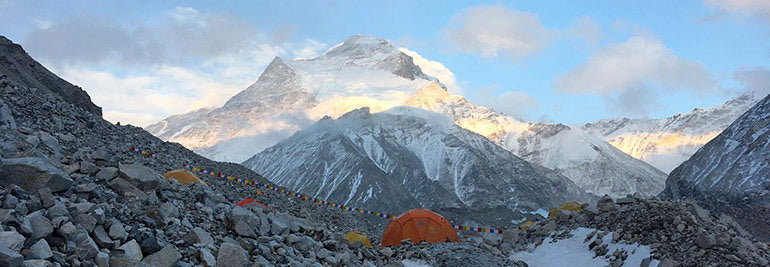
It’s not easy being Emelie! Get in the mind of one half of a mountain-sport power couple
I’ve been to the Himalayas before, but not like this
I’ve been running in the Himalayas plenty, but I’ve never done anything quite this: an attempt on Cho Oyu, an 8000m peak and the sixth tallest mountains in the world.
We did all the acclimatization at home
I was there for less than two weeks – most people take two months to acclimatize. This is very much new-school, fast-and-light alpinism. We did all the acclimatization at home hooked up to a machine that simulated being up at 7500m.
People hear we did an expedition, and they think ‘sherpas’
But that’s not how we did it. That’s not how I want to go the mountains, and not how Kilian wants to go to the mountains.
There was no pressure
This was a trip I did for myself, out of my own pocket – so there was very little pressure to ‘do it for the sponsors’. I wanted to explore for myself and see what was possible for myself.
At sea level Kilian is much faster
But at altitude we start to even out a little bit more – although he will always be stronger and more technical. We were surprised at how fast we were moving at altitude – about 250m an hour at 7500m. That’s pretty fast.
I reach 7500m and 7800m on two different days
The first time was a planned acclimatization. The second attempt was a summit bid – it was our last day, and there was a small weather window. But it got late, bad weather started rolling in, and I simply decided to turn around. Kilian and I discussed that he would go on. I had to wait a few hours for him to come down – during that time I regretted a bit the decision to split up.
Ueli’s death gave us a big scare
We were in Cho Oyu we got the news about Ueli Steck. I didn’t know him personally well, but he was friends with Kilian. He was extreme but he was a hero. His life was an affirmation of everything that is possible. When he died it was hard.
Kilian never considered not following through
There is a big difference between Ueli’s very technical route and Kilian’s Everest Route. I knew Kilian was in a really good shape and responding well to the altitude. I knew he would be fine on Everest in the right conditions. When he was taking longer than expected I began to worry a bit, as Kilian is usually extremely good at predicting his times – but I was getting updates from Seb Montaz.
I don’t want to do Everest
I want to go to some high altitude mountains. I really liked it. Mountains are the foundation, racing is just the topping. I love running and skiing, and I’m fascinated with alpinism, but I’m more concerned about the exposure. I don’t like that. I’m a big fan of life. I don’t see myself moving in the kind of terrain that Ueli did, in the way that he did. Even if I attained the technical skills, I don’t think I want to be here.
I would like to go back to Mt Blanc
Ii have been running up and down many times, but I want to put a record on that one – there’s not so many women doing it. I would like to go back to Cho Oyu to ski, as the winter route looks amazing. Some other bigger peaks as well. But Cho Oyu on skis might be my next dream trip.
I am happy Kilian is done
I want to keep his passport so that he can’t go anywhere for some time!
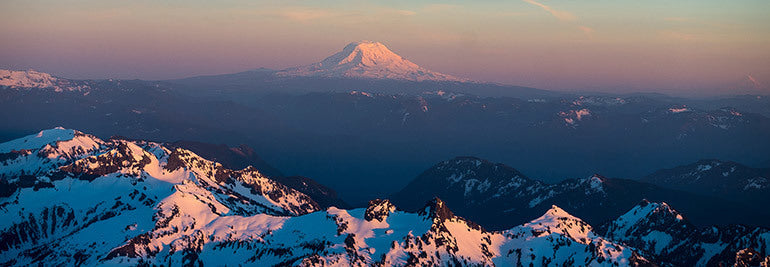
Can an e-Car support an epic ski adventure? 100%.
As a professional adventurer, I constantly search far and wide for new challenges and new spots to explore. My happiness, my inspiration… essentially everything that fulfills me comes from nature. But looking at how I access these adventures, it’s clear: I am killing the world as it stimulates me.
Not only was I well beyond the sustainable level, there was more that the test could not calculate. The heli-guiding, the snowmobile I used for access – these were not added to the thousands of kilometers driven in my F-350, or the multiple intercontinental flights. The truth was obvious: I needed to change my ways.
Immediately I decided to try something suggested by my brother Graham at his TED talk. I became a weekday vegetarian and got my family to join me. (It is amazing to think how much of an impact the global meat industry has!) A simple but very effective change. But for me, with my globe-trotting adventures, I really needed to look into my travel.
So I quit heli-ski guiding, sold my giant diesel truck, let my snowmobile rust and looked at different ways to get to the trailhead.
We are constantly reading about electric vehicles being the future – but I was skeptical. EVs have historically had a limited range – which makes them ideal commuter vehicles for urbanites – but useless for someone where I live.
Revelstoke is a small mountain town, deep in the Canadian mountains, 250–400km from major cities. With cold winters and deep snow there are many very valid reasons to be scared of converting to electric. The sacrifices I needed to make seem daunting – but perhaps they are not as big as they seem.
So we had to test it out. My friend Chris Rubens and I went on an electric adventure. Our goal: live our normal adventurous lifestyle while being more sustainable getting from spot to spot.
Chris and Greg on their electric volcano adventure.
I rented a Nissan Leaf from Ecomoto in Vancouver – a commuter vehicle with 100 miles of range. Far from ideal – but if we could drive down the West coast of the USA, climb and ski a bunch of volcanoes and make it back, we could prove to ourselves that electric access is the future.
So first, we met up and climbed and skied Mt Baker, then began our true road trip down south. An app called “Plug and Share” would guide us to all the level 3 chargers, which take around 40 minutes to fully charge the car. This trip was admittedly ideal, since the I-5 corridor that goes south down to Washington, Oregon and into California is littered with these chargers.
It’s not to say we didn’t face challenges. The trailhead for Mt Rainier is quite far inland and well away from any Level 3 chargers. But our app showed us a Level 2 charger that someone had set up at their house for their Tesla. We arrived at the park boundary and started charging at Phil’s personal plug. The percentage slowly moved upwards. We had to hastily leave with barely 70% as the park’s gates were closing. Committed, we drove upwards. As we climbed up to the trailhead our % dropped and dropped. 40%...35% and then finally at 31% we made it. We parked and decided to deal with it when we returned.
Greg charging down a sun-baked volcano.
A great couple of days had us on the 14,400-foot summit and then skiing down a heavily crevassed, but super awesome run. Arriving back at the car we wondered if our first mistake was going to haunt us. Luckily the Leaf has a ‘B” mode which allows the car to slow itself using the engine, putting electricity back into the motor. So as we drove down 5500 feet we brought our charge back up to 50%. A few hours at Phil’s charger and we were off. Yeehaw! Maybe this is going to work!
Mt Hood was our next objective – and there were Level 3 chargers right up to the trailhead. A great summit and silly ski had us driving south. Eventually the ease of charging had us pushing the battery percentage as low as we could go, extending each drive till the % disappeared and the ‘KMs left’ blinked out. We realized there was always extra battery left, and we pushed it many times. Never fully running out of gas – or rather, juice.
Charging, charging... to make it to yet another mountain.
We made it as far south as Mt Shasta in California, where there were less Level 3 chargers and we ended up charging up at RV campgrounds – Level 2 chargers that would take 3-5 hours to fully charge. A couple oddball Canadians, camped amongst the behemoth RVs.
While we drove back north, hitting Mt Adams on the way we pondered our experiment. We ended up traveling almost 5000km, climbed and skied six volcanoes, went rock-climbing five times, had amazing adventures and camped in great places. Essentially: our normal lives, with one major difference. We used one liter of gas during the whole trip: for our cookstove.
Not being able to move quickly between objectives made us more relaxed. Forced stops every few hours had us re-thinking our Type A personalities. To me electric vehicles are the future, especially since climate change would affect our jobs so badly.
My lesson has been learned. Since returning from this trip I have bought an electric Chevrolet Bolt and have fully jumped into the electric vehicle movement. I have dreams of summiting 100 mountains and creating minimal emissions while doing so. It’s a challenge I am calling ‘electric adventures.’ I am 14 summits in, and I have run to some, climbed up others, and skied off those volcanoes. It is a great start and it feels so amazing to be part of the solution to our climate crisis. I will never be perfect – but I can search out ways to be better.
All images © Chris Rubens
Watch "Electric Adventures with Greg Hill and Chris Rubens"now
Press play and follow along on an Electric Adventure
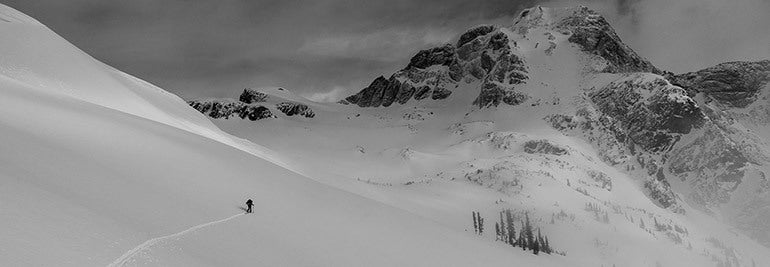
Yes, you can use your Suunto in the mountains for ten straight days
It’s no secret that for years I have been addicted to recording my adventures. It started out in the pre-tech era with my first ski traverse in 2001. A 5-day loop through the mountains where we skinned and skied our way around the Hurley Horseshoe traverse. Afterwards, I remember taking a pencil and reliving our traverse by drawing in our up and downs, our summits and creek crossings.
The habit grew on me. It got to the point where I had maps tacked up on my walls with lines drawn all over them. My documentation led me to go to where there were no lines and I would explore all day and return to fill in the blanks.
When Suunto came out with the Ambit my addiction evolved. All of the sudden my pencil lines on flat maps became 3D lines laid over satellite images. I could go on a wild excursion, come home and place a line onto mountaintops and down steep ski descents. My adventures became more interactive and ‘lived’ online. Since then I have always imported all my lines, from Norway to Pakistan to remote Canadian mountaintops – and now I can see all my efforts overlaying the world. It’s truly amazing.
Since that first ski traverse in 2001, I have done 10 multi-day traverses – up to 21 days long – but my last was in 2009.
This year as we prepared for a 10-day trip I wondered: would I be able to use my watch to log every day? We hoped to be completely self-sufficient – every gram added to the 20+ kilos of weight on our backs. I would not bring anything extra. Which meant that I did not want to bring a solar charger or battery pack for my Suunto Spartan Ultra.
Of course, I wanted to have this entire expedition logged – but would the watch really last long enough? With a few tweaks to settings, I could theoretically give the watch enough battery for 65 hours of skinning and shredding. Well… maybe not shredding, since our bags did weight a lot.
We started the trip on April 16th and hitchhiked our way to the start. I woke up sick, with low energy, but the wheels were in motion and I felt like I could not let the team down.
The Monashee traverse is a ski tour through the rugged Columbia mountains that sit to the west of Revelstoke. Once you get it, there are no ski lifts, no towns – just one cabin and a 100 km of skiing from South to North. It is not particularly remote, but it is challenging. With mountains peaking around 3000m, huge granite walls and heavily glaciated terrain, success was never guaranteed.
For the first four days the weather was stormy, and the avalanche hazard went really high. This was the most challenging terrain to negotiate but as luck would have it our bigger descents, and more committing ascents, had already slid – the only reason we were able to move through this complex terrain.
Ski traverses have a simplicity to them that is very rewarding. Each day the challenges are simple, eat, travel through complex unknown terrain, stay safe, eat, drop the big bags and ski a little, find a great place to camp, eat, sleep and repeat. Daily new views are seen and appreciated.
We fell into a routine and moved endlessly north. Most of our challenges were weather based and we persevered forwards. On the day of our lowest morale, we also experienced our best sunset and northern lights, which rejuvenated our excitement and desire to dig deep and push forward.
7 days in and my watch was still recording each day. But with 3 days to go and 30% battery power I wondered – would it last?
Finally, the weather got better and we managed a couple of great ski lines. Chris Rubens got a great line in the alpenglow on Mt Mulvahill.
10 days of touring finally had us boot packing up Mt Begbie, Revelstoke’s signature mountain. The watch was still going and we were all exhausted and excited to be finishing off with this summit.
All-in-all we ski toured 100km, including 10,000m of ups and downs, and over 68 hours of logged lines. The watch made it through. Was it all worth it? I think Chris’s last turns answer that question.
All images © Greg Hill and Chris Rubens

Dream lines
I wonder if I could...? Fill in the… with any sort of challenge and that is the beginning of something great. I am not saying that every dream I have ever had I have accomplished. Not even close. But the dreams I have realized, mean so much to me. They are the ones that have made me who I am, and helped direct me to where I am going.
My dreams in the mountains are endless. There are lines that I have dream skied so many times I sometimes wonder if I have actually skied them. Seriously. Occasionally when I get deeply into a dream about skiing a line, I can get all adrenalized and excited, just knowing what the feelings would be dropping into such a line. These dreams sustain me for hours while I skin up mountain sides, often I flip between the realization of the dream I am on and wondering about future lines I could ski.
The West face of Mount Macdonald, one of Greg’s dream lines. A possible ski descent? (Image by Bruno Long)
There are dream lines that are realistic and then those that are not…well maybe not… and that is the fun, as our skills progress, what was once an unattainable line suddenly becomes possible. And then the other dream lines can also become reality.
I distinctly remember when my first dream ski line became reality, and how fulfilling it was. In 1998 I was learning to backcountry ski when someone pointed up at Aymers Couloir on Mount Temple in the Canadian Rockies. They mentioned that people had just skied that line. I looked, up and up, and saw this crazy looking couloir that started from a ridge off the biggest mountain I had ever seen. It seemed almost impossible that such a line was skiable.
And my dream began. For years I progressed my ski mountaineering skills, always with this nagging memory of a dream line in the Rockies. Then in the spring of 2005, my skills were good enough, my knowledge solid enough, and my partners ready. We ventured towards this impressive couloir and the second I got to the fan of the line I knew I would set the boot pack the whole way up. I had so much energy from years of dreaming about visiting this place that nothing could stop me.
The 900 m couloir could not stop my endless drive, the thigh deep snow was not enough to convince me to turn around, I was living my dream. Standing on top I was able to reflect on all the progression that had allowed me to grow from a fledgling backcountry skier who couldn’t believe this line was possible, to someone who had the skills and strengths to get to the top and with those great thoughts in my mind I tipped the balance and shredded down.
Checking out some a potential descent at the Stiftons in British Columbia, Canada. (Image by Bruno Long)
Every day that I tour around I am always looking and wondering. For sure many of the lines I will never ski, but if even 10% of them become reality then I am happy. Rogers Pass has been my stomping grounds for 19 years, and I never walk anywhere without looking up at the potential places I have yet to visit. I love skiing the “Ramp” but what about that line above that ends in cliffs? It’s so similar to the Ramp, it just requires a little rope work at the end. Or what about the West Line off Mount Macdonald, will it ever fill in enough for us to venture down?
Or really what about that line on the Siftons, should we go there tomorrow? Dreams are the seeds of adventure. Never stop dreaming.
To prepare you for your dream line, watch Greg’s “7 terrain tricks” that he (literally) can’t live without.
All images by Bruno Long
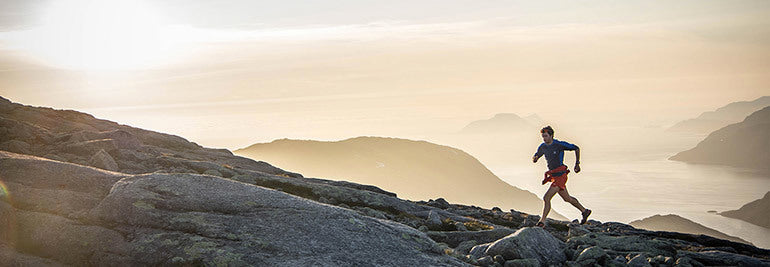
How do you train, Kilian Jornet?
Kilian Jornet has spent a lot of time in the mountains since he was a kid and has been training to improve since he was a teenager. All the hours, days and years of training have made him one of the best all mountain athletes ever. Whether running, skiing or climbing Kilian is breaking records, winning races and inspiring others.
Kilian, in the video you say: “If you don’t have pleasure when you train, you will never improve!” What makes training fun for you?
You don’t train to have fun but to improve, to reach goals or to adapt, but it is important to have pleasure doing the activity you do to spend this amount of time easily. I love to ski and run and to be in the mountains and I’m enjoying when I do that and it is part of my training.
How do you turn tough days into good ones?
Some days you just switch to work mode, listen to music in your headphones and watch the watch count the time and meters you need to do that day. Sometimes it’s more hard than fun but it is important to do. A good or bad day is not fun or not fun. Some training session can be hard and fun, fun but not hard, hard and not fun or not fun and not hard. Good or bad depends on what you have improved or learned, what have you experienced.
How has your training changed over the last 10 years?
Not much in big lines, I like the principles of training I do, like quantity over quality and specific training. They seem to work for me. I try to be open and look at new ways to train and test different things.
How is it possible to be fast from short races, like a vertical km, to super long ultras?
Train different situations, train some long days, some short. It does demand a lot of time (years) and time (hours a year) to do all different kind of training.
What are your strengths?
In physical capacities, recovery rate and VO2 max. Then psychologically I can enter a non-emotional state that helps me in stress situations. Now also my experience.
What would you still like to improve?
Many things. It’s important to work to improve both the weaknesses and the strengths.
What are you focusing on this year?
Mostly rehab and recovery from my shoulder surgery that I had in October. Then I’ll see how it goes. I had a ski fall some years ago and dislocated both of my shoulders. Since then I have dislocated them several times and knew I needed to get the operation done at some point.
I don’t really focus but try to be in good shape on average and adapt depending on the next goal that can be a long or short ski mountaineering or trail running race or mountaineering.
What motivates you to keep pushing your limits?
I just think it is great to know yourself.
Watch Kilian's video "How do I train (again and again)"
Kilian Jornet started training the day he was born. The mountains were his playground and without realizing it he created his own training philosophy that is based on repeating, trying and failing. Watch Kilian’s How do I train now!
